Lancashire
Explore hidden histories, historic photos, and things you never knew about Lancashire from the collections and archives of Historic England.
Discover your local listed buildings and places
Introducing some of Lancashire's most historic sites, included in the National Heritage List for England. Some of these captions have been summarised by AI. Click through for the official List entry. Skip this section and go to place by numbers
Holmes Mill, Clitheroe
Clitheroe
A textile mill built in the 1820s and extended during the 1830s with later C19 additions.
Church of St Nicholas
Fleetwood
Anglican church, 1960-62 to designs of Laurence King; built by Brown & Jackson Ltd.
Bleasdale Circle enclosed Bronze Age urnfield
Bleasdale
Bleasdale Circle is a rare Bronze Age urnfield in northern England, providing insight into Middle Bronze Age burial practices, beliefs, and social organization.
Woodfold Park
Mellor
Woodfold Park, established in the 1790s, features a country house and grounds influenced by architect Charles McNiven.
Sir Hiram Maxim's Captive Flying Machine
Blackpool
A static amusement ride of 1904 designed by Sir Hiram Stevens Maxim, comprising a raised timber boarding platform around a central vertical drive shaft supported by a steel lattice tower,...
Former Pennine Tower Restaurant at Lancaster Service Area…
Forton
Tower and cantilevered restaurant at motorway service station. 1964-5.
Avenham Park
Preston
A public park designed by Edward Milner and laid out in 1861 incorporating an existing riverside walk which had been laid out 1847-9.
Former Nelson Old Library
Nelson
Former Nelson Old Library by architects JR Poyser and WB Savidge, funded by Andrew Carnegie, opened in 1908.
Blackpool Middle and Lower Walk colonnades including asso…
Blackpool
Colonnaded portal with stairs, of 1923, and a colonnaded public path with a cantlievered roof, of 1923-1925.
Alston Hall
Longridge
Country house by Alfred Darbyshire in a Tudor Gothic style, built 1874-6 of buff sandstone for colliery owner John Mercer.
Plastic Classroom at Kennington Primary School
Fulwood
The Plastic Classroom at Kennington Primary School was the first fully-structural plastic building in Britain.
Pigeon Tower, staircases, stone arches, stone screen and …
Rivington
A pigeon tower with associated stone staircases with flanking walls and stone arches to the west, an attached stone screen to the south, and two stone gate piers within Rivington Gardens.
Scarisbrick Hall
Scarisbrick
Scarisbrick Hall, transformed by the Pugins in the 19th century, features a landscape park potentially influenced by Repton's 1803 Red Book.
Preston Central Bus Station and Car Park
Preston
A bus station with multi-storey car park above, also incorporating a taxi rank (but excluding the pedestrian links).
Lever Park
Horwich
Lever Park, designed by Thomas Hayton Mawson and William Hesketh Lever, was developed between 1901-1911.
Astley Hall
Astley Village
Astley Hall's gardens and parkland reflect early 17th and 18th-century designs, possibly influenced by John Webb, and have evolved into a public park dedicated as a War Memorial.
Carnforth: the coaling plant
Carnforth
Plant for mechanically refuelling the tenders of steam locomotives with coal: part of the modernised Motive Power Depot built for the London Midland Scottish Railway in 1938-44, being the...
The Black Horse
Preston
Hotel, now a public house, of 1898, by J A Seward of Preston for the Atlas Brewery Company of Manchester.
Remains of the gas plant, chimney, wheel pit and mill rac…
Nether Wyresdale
The standing remains and earthworks and buried remains of the gas plant, chimney, wheel pit and mill race of Dolphinholme Worsted Mill.
Maritime Museum
Lancaster
The former Custom House stands on the south west side of St George's Quay. 1764, designed by Richard Gillow for the Port Commissioners.
The Grand National
Blackpool
A wooden 'Möbius loop' racing rollercoaster of 1935, designed by Charles Paige and Harry G Traver, with a concrete Moderne station by Jospeh Emberton completely replaced in 1990 to the...
Wrightington Hall, including attached north service wing
Wrightington
Country house, now a hospital conference centre and offices, early C18, altered in 1860-2, with further C20 and C21 alterations.
Rivington Gardens
Rivington
Rivington Terraced Gardens designed between 1906-22 predominantly by Thomas Mawson for Lord Leverhulme with additions by James Pulham & Son.
Capernwray Hall
Arkholme-with-Cawood
Capernwray Hall features mid to late 19th-century formal gardens, a 1901 Rose Garden by Thomas Mawson, and early 19th-century parkland.
Abbey Mill
Withnell
An integrated cotton spinning and weaving mill established by 1840, with C19 and C20 alterations.
Cabin Lift
Blackpool
A seaside lift tower of 1930 known as the Cabin Lift, associated toilets and upper promenade wall built to a design by the borough architect John Charles Robinson.
Ashton Memorial Gardens and Williamson Park
Lancaster
Ashton Memorial Gardens and Williamson Park, developed in the 1870s by James Williamson Snr, features the Ashton Memorial and offers panoramic views over Lancaster.
The Winter Gardens
Blackpool
A Winter Gardens seaside entertainment complex built 1875-8 to a design by Thomas Mitchell with later alterations and additions by Mangnall & Littlewood and J M Boekbinder in 1894, Wylson &...
Stonyhurst College, Old Quadrangle
Aighton, Bailey and Chaigley
School buildings,1592 and later, by C.A.Buckler and others.
Round Loaf bowl barrow on Anglezarke Moor
Anglezarke
The Round Loaf bowl barrow on Anglezarke Moor is a well-preserved funerary monument from the Late Neolithic to Late Bronze Age, retaining significant archaeological deposits.
Queen's Park, Blackburn
Blackburn
Queen's Park opened in 1887 after development on land near Blackburn by engineers J B McCallum and A Fidler, featuring sports facilities and a lake.
Sunnyhurst Woods
Darwen
Sunnyhurst Woods, initially planted in the early 19th century, became a public park in 1903, bought by Darwen Corporation from Eccles Shorrock's family.
Scarisbrick Hall at 392 127
Scarisbrick
Scarisbrick Hall, now a school, is a Gothic-style country house with origins in the 16th century, extensively remodeled in the 19th century by Augustus Welby Northmore Pugin.
Worden Hall
Euxton
Worden Hall features early 19th-century parks and gardens, tied to historic families, evolving from Knights of St John holdings to a public park by 1951.
Browsholme Hall
Bowland Forest Low
Browsholme Hall, a Grade I listed early 17th-century house, features significant modifications by architect Jeffry Wyatt in the 1800s, blending historical elements and architectural styles.
Explore more
Search for more listed placesLancashire through time
This timeline shows the first period of use for buildings and places on the National Heritage List for England, just one of the details recorded for every list entry. Click around to see how Lancashire changes over time. Skip this section and go to aerial photos
Prehistoric Before AD 43
Prehistory covers a million years of human occupation before the Roman invasion, from hunter-gatherers of several human species, including Neanderthals, to more recent herders and farmers. It was a time of developing technologies and belief systems, involving contact with and migration from Europe, all reflected in the variety of artefact and monument types characteristic of particular prehistoric periods.
Roman AD 43 to AD 410
Britain was invaded by four legions of the Roman army in AD 43, who relatively rapidly conquered England from landing points in Kent. Parts of Wales and Scotland soon followed.
Roman culture brought urbanism, monumental buildings, wide-ranging religious beliefs, writing, and strong social hierarchy. The Roman administrative system was withdrawn in AD 410.
Early medieval AD 410 to AD 1066
This period, often associated in England with Anglo-Saxons and Vikings, saw a reduction in urban living from the Roman period and increased migration from northern Europe.
Traces of this period can be found in cemeteries, particularly in artefacts and in some of the very early churches, as this period also saw the growth of Christianity in Britain.
Medieval AD 1066 to AD 1540
This period, sometimes known as the Middle Ages, began with the Norman invasion in AD 1066. It saw a significant rise in military and defensive buildings such as castles and earthworks, as well as religious houses dominating a largely agricultural landscape.
The monarchy and Church dominated the period, which also saw the break with the Roman Catholic Church and the English reformation.
Post medieval AD 1540 to AD 1901
The Post-Medieval period brought seismic changes to life in England, with religious reformation leading to the democratization of worship and the destruction of hundreds of religious houses.
In parallel, there was a huge expansion of scientific study and enlightenment that permanently altered the nation's social structure and landscape. Industrialization and mass production lead to wider global trade, emigration, and immigration.
20th century AD 1901 to AD 2000
The 20th century saw an incredible expansion of England's transport networks, with suburban growth shadowing rapid infrastructural expansion. The establishment of state schools, hospitals, and modern technical colleges, with new architectural styles, radically changed the appearance of towns and cities.
Two catastrophic world wars and the 1918 pandemic also brought unprecedented change, altering England's built environment and social structures forever.
Prehistoric Before AD 43
Prehistory covers a million years of human occupation before the Roman invasion, from hunter-gatherers of several human species, including Neanderthals, to more recent herders and farmers. It was a time of developing technologies and belief systems, involving contact with and migration from Europe, all reflected in the variety of artefact and monument types characteristic of particular prehistoric periods.
Roman AD 43 to AD 410
Britain was invaded by four legions of the Roman army in AD 43, who relatively rapidly conquered England from landing points in Kent. Parts of Wales and Scotland soon followed.
Roman culture brought urbanism, monumental buildings, wide-ranging religious beliefs, writing, and strong social hierarchy. The Roman administrative system was withdrawn in AD 410.
Early medieval AD 410 to AD 1066
This period, often associated in England with Anglo-Saxons and Vikings, saw a reduction in urban living from the Roman period and increased migration from northern Europe.
Traces of this period can be found in cemeteries, particularly in artefacts and in some of the very early churches, as this period also saw the growth of Christianity in Britain.
Medieval AD 1066 to AD 1540
This period, sometimes known as the Middle Ages, began with the Norman invasion in AD 1066. It saw a significant rise in military and defensive buildings such as castles and earthworks, as well as religious houses dominating a largely agricultural landscape.
The monarchy and Church dominated the period, which also saw the break with the Roman Catholic Church and the English reformation.
Post medieval AD 1540 to AD 1901
The Post-Medieval period brought seismic changes to life in England, with religious reformation leading to the democratization of worship and the destruction of hundreds of religious houses.
In parallel, there was a huge expansion of scientific study and enlightenment that permanently altered the nation's social structure and landscape. Industrialization and mass production lead to wider global trade, emigration, and immigration.
20th century AD 1901 to AD 2000
The 20th century saw an incredible expansion of England's transport networks, with suburban growth shadowing rapid infrastructural expansion. The establishment of state schools, hospitals, and modern technical colleges, with new architectural styles, radically changed the appearance of towns and cities.
Two catastrophic world wars and the 1918 pandemic also brought unprecedented change, altering England's built environment and social structures forever.
Aerial photos of Lancashire
Aerial photography helps reveal secrets of England's changing landscapes that are impossible to see from the ground. Skip this section and go to archive images
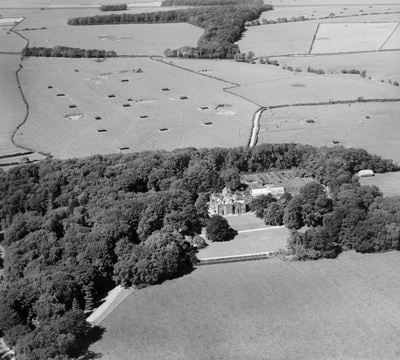
Clifton
Clifton Hall, Clifton, 1938

Clifton
Clifton Hall, Clifton, 1938

Liverpool
Liverpool Cathedral and environs, Liverpool, 1924

Liverpool
The Anglican Cathedral Church of Christ and surrounding area, Liverpool, 1963

Liverpool
The site of Liverpool Metropolitan Cathedral on Brownlow Hill, Liverpool, 1934

Liverpool
Liverpool Metropolitan Cathedral, Liverpool, 1967
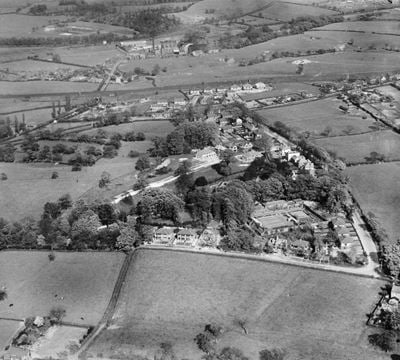
Middleforth Green
Penwortham Hall, Park Lane under construction and environs, Middleforth Green, 1936
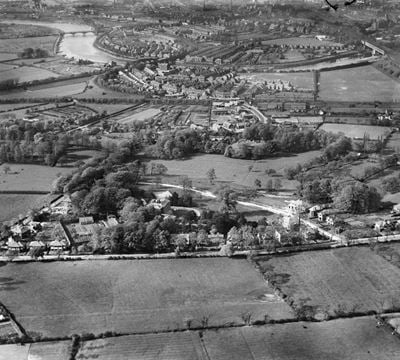
Middleforth Green
Penwortham Hall, Park Lane under construction and environs, Middleforth Green, 1936
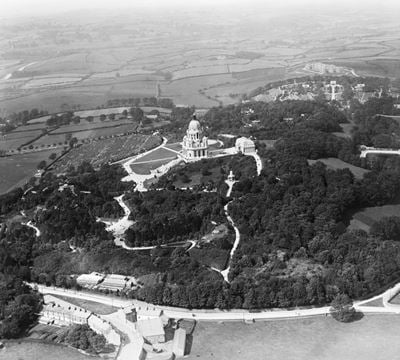
Lancaster
The Ashton Memorial, Williamson Park, Lancaster, 1920

Lancaster
The Ashton Memorial in Williamson Park, Lancaster, 1949
Lancashire in the Historic England Archive
The Historic England Archive cares for over 15 million images, dating from the 1850s to the present day. Discover stunning images of Lancashire's past. Skip this section and go to stories about heritage
Charles George Harper Collection
Preston, Lancashire
Date created: 1892 - 1933
The entrance doorway to Dun Cow Rib Farmhouse
Eileen ‘Dusty’ Deste Collection
Rossendale, Lancashire
Date created: 1966 - 1974
A group of children walking past the side elevations of back-to-back houses at 465-467 Market Street
Eric de Mare
Blackpool
Date created: 1960 - 1969
Interior view of the Winter Gardens in Blackpool showing the main staircase in the background and tables and chairs in the foreground.
John Gay Collection: Modern Architects
Ingol, Preston, Preston, Lancashire
Date created: 1978
The newly constructed Employment Rehabilitation Centre in Ingol, Preston
John Gay Collection: Rural Life
Blackpool
Date created: Jul 1953
A prize winning bull at the Royal Show
John Gay Collection: Miscellaneous
South Shore, Blackpool, Blackpool
Date created: 1946 - 1955
Interior view looking along curved wall towards classical pavilion
John Gay Collection: Counties
South Shore, Blackpool, Blackpool
Date created: 1946 - 1955
An elevated view looking down onto holiday makers wandering around Blackpool Pleasure Beach
John Laing Collection
Preston, Lancashire
Date created: 23 Oct 1969
A group of suited men, including Lord Stokes (second from left), gathered outside Preston Bus Station on the day of the opening ceremony
London, Midland and Scottish Railway Company
Blackpool
Date created: 21 Aug 1895
Crowds enjoying the summer sunshine on the Promenade, as seen from the end of Wellington Road, with Blackpool tower in the background
Nigel Temple Collection of Postcards of Parks and Gardens
South Shore, Blackpool, Blackpool
Date created: 01 Jan 1930 - 19 Aug 1935
GENERAL VIEW IN GARDENS AT NEW SOUTH PROMENADE
Walter Scott
Wycoller, Pendle, Lancashire
Date created: 1933
An exterior view of the remains of Wycollar Hall and the clapper bridge
John Gay Collection: Counties
South Shore, Blackpool, Blackpool
Date created: 1946 - 1955
An elevated view looking down onto holiday makers wandering around Blackpool Pleasure Beach
Stories about heritage in your local area
Historic England publishes news, blogs, research, videos, and podcasts celebrating England's rich heritage. Discover the stories we have about Lancashire. Skip this section and go to education
Uncovering Local History Hidden on our Streets
Mentions Corporation Park
From post boxes to milestones, drinking fountains to telephone boxes, historic street furniture can reveal lots about your local heritage.
The Landladies of Morecambe
Mentions The Winter Gardens, Midland Hotel
Famed for their no-nonsense reputation, gruff manner and strict rules and regulations, Morecambe’s landladies have seen it all.
A Brief History of Reinforced Concrete Buildings
Mentions Preston Central Bus Station and Car Park
Reinforcing concrete made highly complex large-scale structures possible.
The Bennets, the Bridgertons, and Now You: Assembly Rooms Past and Present
Mentions Assembly
Regency romance has returned to our screens with the likes of Bridgerton and a flurry of Austen adaptions.
Football, Beerhouses and Books: How Victorian Mill Workers Entertained Themselves
Mentions Corporation Park
The lives of Victorian mill workers were far from easy. So what did they do with their spare time?
8 Things to Know About Blackpool
Mentions Imperial Hotel, The Winter Gardens, Tower Buildings
As one of England's favourite seaside resorts, Blackpool has a long history of entertaining its customers for over 200 years.
Heritage at Risk: In Progress
Mentions The Winter Gardens
Founded in 1998, the Heritage at Risk register is the annual snapshot of the health of England’s historic places.
8 Out of This World Examples of Space Age Architecture
Design has always mirrored society, and both the Space Race and the Moon Landing had a huge impact on the era.
Pubs, Parks and Pavilions: Victoria in Public Places
Mentions Darwen Jubilee Tower
Here are just some of the historic public places in England named after Queen Victoria.
Listed Libraries of the North
Mentions Darwen Library and Theatre, and attached railings, Former Nelson Old Library
Libraries have played in an integral part in our literary history.
The Making of the North: 6 New Uses for Magnificent Mills
Mentions Holmes Mill, Clitheroe
Mills are a huge part of northern history, but many are lying vacant and under threat.
The Beautiful North
Mentions The Winter Gardens
In April 2016, towns and cities across the North East, North West and Yorkshire were invited to bid to put on a ‘Great Exhibition of the North’, which...
Mentions Lancashire
Until the 1980s, Morecambe in Lancashire was a favourite holiday destination for working-class families from Northern England and Scotland.
Inside Morecambe’s B&Bs: 3 Generations of Landladies Speak
Until the 1980s, Morecambe in Lancashire was a favourite holiday destination for working-class families from Northern England and Scotland.
Mentions Lancashire
Browsholme Hall is a Grade I listed Tudor house in the Forest of Bowland. It's claimed to be the oldest surviving family home in Lancashire.
Protecting Browsholme Hall
Browsholme Hall is a Grade I listed Tudor house in the Forest of Bowland. It's claimed to be the oldest surviving family home in Lancashire.
Mentions Lancashire
Browsholme Hall is the oldest surviving family home in Lancashire. Its archive tells the story of a community over 500 years.
Creating an Archive at Browsolme Hall
Browsholme Hall is the oldest surviving family home in Lancashire. Its archive tells the story of a community over 500 years.
From Pixels to Pasts: Uncovering the Value of Shipwrecks Through Social Media
Mentions Lancashire
A new study examines how social media platforms can illuminate the social values of shipwreck heritage.
Introduction to Issue 26
Mentions Lancashire
This issue explores aspects of industrial heritage, Palaeolithic landscapes, and the relationship between intertidal heritage and biodiversity.
Kirkham: Forging a Heritage Programme as a Bridge to Wellbeing
Mentions Lancashire
Supporting wellbeing and cohesion in a Lancashire community through a social prescribing programme based on interacting with heritage.
The Empire Theatre, Burnley
Mentions Burnley Mechanics, The Empire Theatre (former Empire Music Hall, Theatre of Varieties and Cinema), Lancashire
Unearthing a hidden gem: research into the Burnley Empire aims to raise awareness and inform potential reuse of the building.
A Wellbeing and Heritage Strategy for Historic England
Mentions Lancashire
Historic England is developing a strategy to ensure that everyone can experience the wellbeing benefits of heritage.
New Funding to Celebrate Rural and Coastal Working-Class Heritage
Mentions Lancashire
Historic England is funding new projects to explore untold stories and celebrate the people and places at the heart of our history.
Investigating the Built Environment in Lancashire’s Historic Textile Areas
Mentions Lancashire
Exploring the local infrastructure that underpinned the industrial revolution.
Heritage and Social Prescribing
Mentions Lancashire
How heritage can play a role in promoting wellbeing through social prescribing.
New Funding to Uncover and Celebrate Working Class Heritage
Mentions Lancashire
Historic England's Everyday Heritage Grant programme is funding 56 new projects across the nation, telling the stories of working class heritage.
Using Drones For Field Survey
Mentions Lancashire
Small unmanned aircraft, often known as drones, can now be used to create digital field surveys. Assessment of the results suggests a technique with c
The Seafront: Exploring the Seaside's Shop Window
Mentions Lancashire
Explore the seafront heritage of England's seaside resorts, a space that is both familiar and surprising.
16 Remarkable Historic Places Listed in 2023
Mentions Church of St Nicholas, Lancashire
Take a closer look at the historic gems that were examined, protected and added to the National Heritage List for England in 2023.
Lancashire's social history through photos
Over 10,000 images from the Historic England Archive have been specially selected and re-captioned for teachers, students, and anyone who wants to learn more about their local area. Skip this section and go to grant-aided places
Workers housing, Slater Terrace, Sandygate, Burnley, Lancashire
Period: Victorian (1837 - 1901)
This terrace of 11 workers cottages is built over a warehouse. They were built in c1848-50 for George Slater, proprietor of Clock Tower Mill.
Workers housing, Slater Terrace, Sandygate, Burnley, Lancashire
Woolworths, Marine Road Central, Morecambe, Lancashire
Period: 1920s (1920 - 1929)
Certain types of building are highly characteristic.
Woolworths, Marine Road Central, Morecambe, Lancashire
Winter Gardens, Marine Road Central, Morecambe, Lancashire
Period: Victorian (1837 - 1901)
The Winter Gardens began in 1878 as the People's Palace and included baths, entertainment and an aquarium. The building later became a ballroom.
Winter Gardens, Marine Road Central, Morecambe, Lancashire
Winter Gardens, Church Street, Blackpool, Lancashire
Period: Victorian (1837 - 1901)
The main entrance to the Winter Gardens advertises the current attractions.
Winter Gardens, Church Street, Blackpool, Lancashire
Winter Gardens, Church Street, Blackpool, Lancashire
Period: Edwardian (1902 - 1913)
This Edwardian image of the Winter Gardens in Blackpool shows the interiors of the space. It was taken between 1900 and 1904.
Winter Gardens, Church Street, Blackpool, Lancashire
Winter Gardens, Church Street, Blackpool, Lancashire
Period: 1930s (1930 - 1938)
The interior of the Andalucian-style Spanish Hall, created within the Winter Gardens in the 1930s.
Winter Gardens, Church Street, Blackpool, Lancashire
Winter Gardens, Blackpool, Lancashire
Period: Victorian (1837 - 1901)
A view over the rooftops looking down on the Winter Gardens and the Big Wheel.
Windmill, East Beach, Lytham St Anne's, Lancashire
Period: Georgian (1714 - 1836)
This windmill is a tower mill. It was built in c1805 and was in use until it was severely damaged by a fire in 1918. It was then restored in 1987.
Windmill, East Beach, Lytham St Anne's, Lancashire
Visit grant-aided places near you
These places and buildings have been helped by Historic England's financial grants. Find local heritage in your neighbourhood that you never knew existed! Please note that opening times may vary. Skip this section and go to related locations
Blackpool Tower, The Promenade, Blackpool, Lancashire
This Grade I-listed Victorian entertainment complex, featuring Ballroom, Circus and other amusements, includes a 500-foot observation tower deck.
Blackpool Winter Gardens, Church Street, Blackpool, Lancashire
Blackpool Winter Gardens, a Grade II*-listed seaside entertainment complex, opened in 1878 and features the Opera House, Empress Ballroom, and Spanish...
Morecambe Winter Gardens, Marine Road West, Morecambe
This Grade II*-listed grand variety theatre and concert hall was built in 1896 by Mangnall and Littlewood.
Scarisbrick Hall, Southport Road, Ormskirk, Lancashire
Scarisbrook Hall is a large Grade I-listed Gothic-style mansion, designed by A.W.N Pugin and built between 1830 and 1860.
Discover more
Ready for more local stories? Take a look at these other places nearby
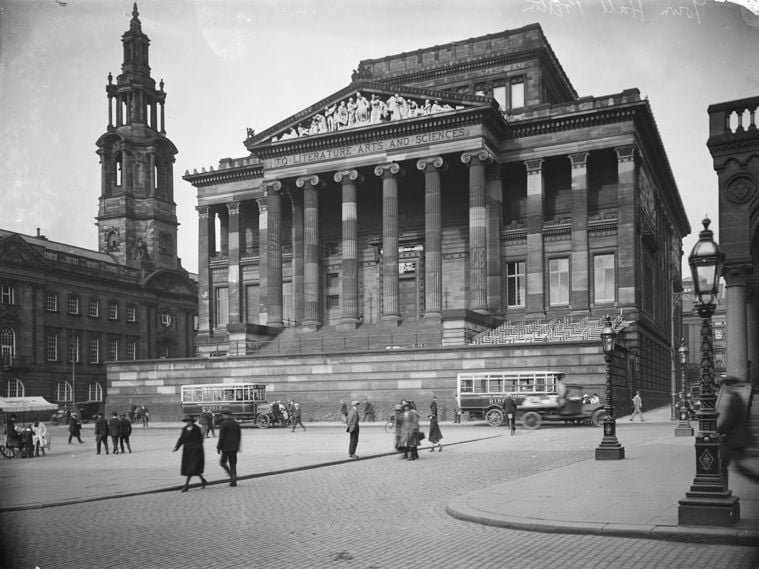
Preston
Local Authority District
South Ribble
Local Authority District

Wyre
Local Authority District